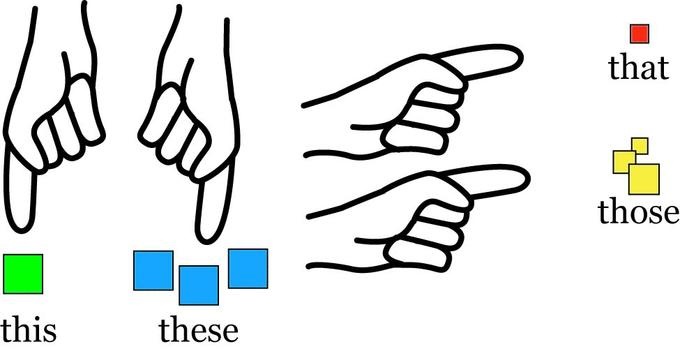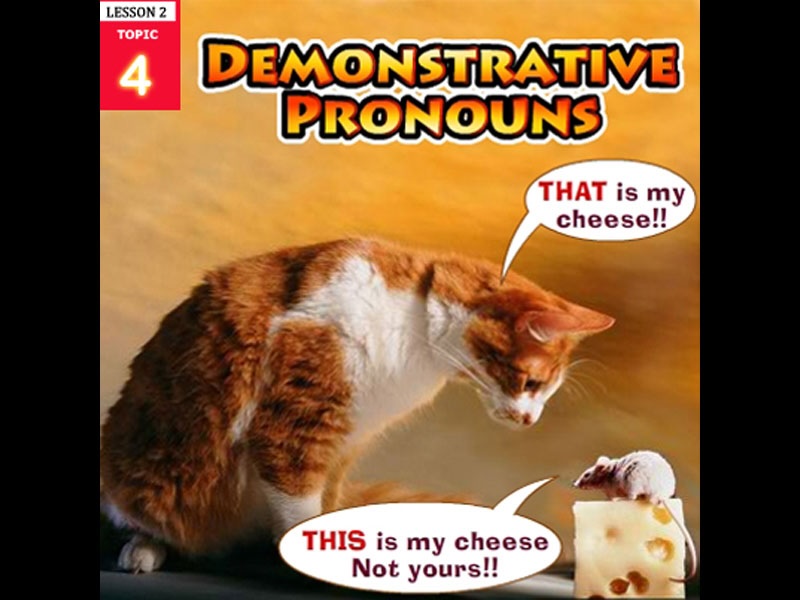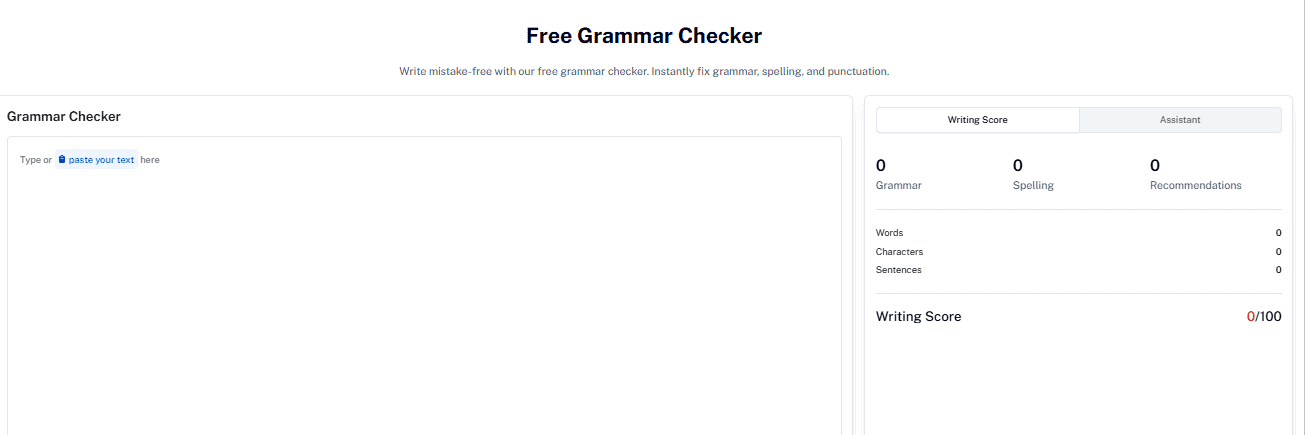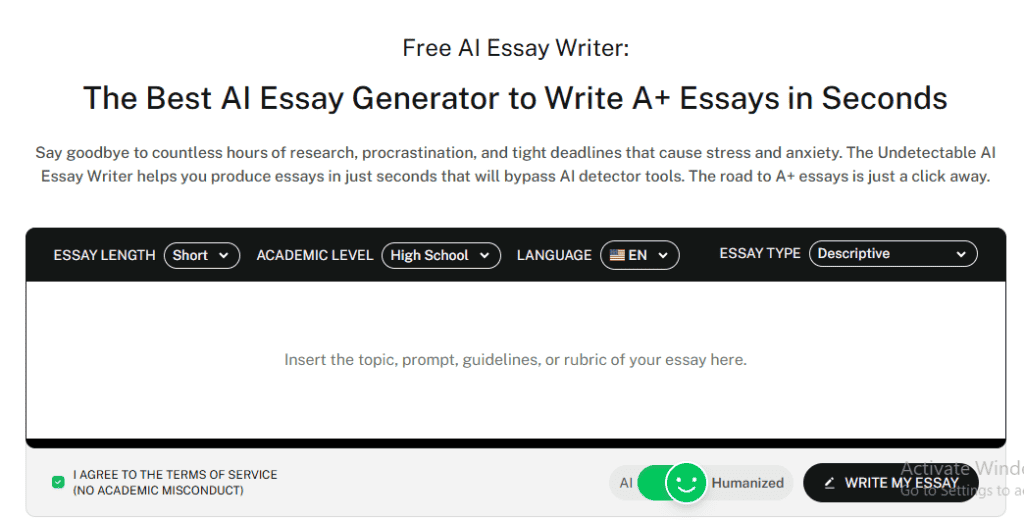Do you know what the “pointing finger” words of English Grammar are?
They’re called demonstrative pronouns.
You probably use them dozens of times a day without even realizing it.
Phrases like…
Can you hand me that?
This tastes great!
Those were fun times.
These highlighted words give direction. They point, show, and focus attention.

In this blog we’re covering everything about demonstrative pronouns.
You’ll learn what are demonstrative pronouns, the difference between this, that, these, and those, and when to use each one correctly.
We’ll also explore demonstrative pronouns examples, cover common mistakes, how to avoid them, and simple tips to use them confidently in writing and speech.
Let’s dive in.
- What are demonstrative pronouns? Demonstrative pronouns (this, that, these, those) are used to point to specific people or things.
- What are the 4 demonstrative pronouns? Use this/these for things that are near, and that/those for things that are far. Use this/that for singular items, and these/those for plural items.
- The same word can mean different things depending on your situation. “This” might refer to your coffee, your idea, or your entire conversation.
- When the word stands alone (“This is good”), it’s a pronoun. When it comes before a noun (“This book is good”), it’s an adjective.
- Don’t overuse “this” in formal writing without clear references.
What Are Demonstrative Pronouns?
Demonstrative pronouns are words that point to specific nouns without naming them directly.
There are four types of demonstrative pronouns: this, that, these, and those. Example:
- Instead of saying “the red book on the table,” we might simply say “that is on the table.”
These words help us refer to people, places, or things in relation to where we are or when something is happening.


Never Worry About AI Detecting Your Texts Again. Undetectable AI Can Help You:
- Make your AI assisted writing appear human-like.
- Bypass all major AI detection tools with just one click.
- Use AI safely and confidently in school and work.
The word “demonstrative” comes from the verb demonstrate, which means to show or point out. So, demonstrative pronouns literally point out something.
At their core, demonstrative pronouns are a subcategory of pronouns called deictic words.
It is a term used in grammar to describe words that rely on context. Like:
- This can mean a pen you’re holding, or a problem you’re discussing.
- That might refer to a person across the room, a past event.
Their meaning changes depending on who’s speaking and when or where they’re speaking.
How They Differ from Other Pronouns
All pronouns take the place of nouns, but demonstrative pronouns are different in a way that they don’t just replace nouns, they point to them. Their meaning depends on how close or far something is in space or time.
Let’s break that down by comparing them with other common types of pronouns:
| Pronoun Type | Function | Examples | How It’s Different from Demonstrative Pronouns |
| Personal Pronouns | Replace specific, known nouns | he, she, it, they | Refer to people or things already identified or named. No focus on distance or time. |
| Demonstrative Pronouns | Point to specific things based on distance or time | this, that, these, those | Meaning depends on physical/temporal context. Stands alone to indicate. |
| Relative Pronouns | Connect clauses to a noun they describe | who, which, that | Used within complex sentences to link ideas, not for pointing. |
| Reflexive Pronouns | Refer back to the subject of the sentence | myself, himself, ourselves | Always refers to the doer of the action. Never points to something new. |
| Indefinite Pronouns | Refer to unspecified or unknown things | someone, anything, none | Vague and general. Demonstrative pronouns, by contrast, point to clearly identifiable things. |
Also Read: What is a Relative Pronoun? Definition, List & Example
Here’s a simple way to remember this:
Demonstrative pronouns rely on position, either in space (this/that object over there) or time (this/that moment in the past or future). For example:
- He is a personal pronoun. You need to know who “he” refers to.
- That is a demonstrative pronoun. It tells you which thing even if the noun was never named.
List of Demonstrative Pronouns
What are the 4 demonstrative pronouns? There are only four demonstrative pronouns in English: this, that, these, and those.
Each one plays a specific role by pointing to something based on distance, number, and even time all without naming the noun directly.
Near vs. Far: Spatial Reference
| Pronoun | Number | Distance | Example |
| This | Singular | Near (close to speaker) | This is my bag. |
| These | Plural | Near (close to speaker) | These are fresh oranges. |
| That | Singular | Far (away from speaker) | That looks interesting. |
| Those | Plural | Far (away from speaker) | Those were your shoes. |
- Use this/these for things within arm’s reach, either physically or emotionally.
Use that/those for things further away, across the room or from the past.
Let’s analyze these demonstrative pronouns in time reference:
- This / These → Present moment or something recent
→ This is a new idea. These just arrived. - That / Those → Past or something distant in time
→ That was a strange day. Those were the rules back then.
Even when you understand the basic rules of this/that/these/those, it is recommended to double-check it with the help of the Ask AI tool.
For example, you can ask:
- Is ‘this’ or ‘that’ correct when referring to yesterday’s event?
- Should I use ‘these’ or ‘those’ for the pens I’m holding?
- Can I use ‘this’ for an idea mentioned earlier in the paragraph?

How to Use Demonstrative Pronouns in Sentences
Let’s understand how to use demonstrative pronouns correctly and clearly in different sentence positions and contexts.
- As Subjects and Objects
Demonstrative pronouns can act as both the doer (subject) and the receiver (object) in a sentence.
Demonstrative pronoun examples as:
- Subject: This is my favorite book.
Here, “this” is the subject and it’s doing the action of being something. - Object: I prefer that.
“That” receives the action of preference. - Predicate Nominative (after linking verbs): The winner is this.
The pronoun renames the subject after the linking verb “is.” - Object of a Preposition: I’m thinking about those.
The demonstrative pronoun acts as the object of the preposition “about.”

- Singular vs Plural Contexts
Demonstrative pronouns must agree in number with the noun they refer to.
- Singular: Use this (near) or that (far)
- This apple is fresh.
- That noise was loud.
- Plural: Use these (near) or those (far)
- These cookies are delicious.
- Those students won the game.
The demonstrative must match the noun.
Incorrect: These is amazing.
Correct: These are amazing.
- Collective nouns usually take singular demonstratives. Example: This team is strong. But if you’re emphasizing individuals i.e., These players are talented.
- Abstract or uncountable nouns are treated as singular. Example: This advice helped me, or that information is outdated.
- Referring to Abstract Ideas or Clauses
Sometimes, demonstrative pronouns don’t point to a physical object but to an entire idea or sentence.
- Clause reference Example:
- She failed the test. This surprised everyone. → “This” refers to the entire previous sentence.
- She failed the test. This surprised everyone. → “This” refers to the entire previous sentence.
- Abstract concept reference Example:
- Democracy is important. That is why we vote. → “That” points to the concept of democracy being important.
If multiple ideas are mentioned, your might not know what “this” or “that” is pointing to. For clarity, especially in formal writing, it’s often better to restate the concept.
Example:
- She failed the test. Her unexpected failure surprised everyone.
Or even better, run your text through Grammar Checker to see if the demonstrative pronoun usage is correct or not. It will not take more than a minute.

Demonstrative Pronouns vs Demonstrative Adjectives
When studying what are demonstrative pronouns, it’s important to understand that the words this, that, these, and those can act as both pronouns and adjectives but their roles are different depending on how they’re used.
Here’s the core difference:
- Demonstrative pronoun replaces a noun. Example: This is delicious.
- Demonstrative adjective modifies or describes a noun.Example: This sandwich is delicious.
To tell the difference, you can try the position test:
- If the word stands alone or is followed by a linking verb like “is” or “was,” it’s likely a pronoun.
- If the word is placed directly before a noun, it’s working as an adjective.
Examples:
- That cake is amazing. → “That” = adjective
- That is amazing. → “That” = pronoun
Not sure if you’re using this or that correctly in your school essay?
Let an AI Essay Rewriter clean up the confusion between demonstrative pronouns and adjectives. Make your writing sharp and grammatically sound.

Examples of Demonstrative Pronouns
Below are real-life demonstrative pronoun examples that show how this, that, these, and those function in different types of communication:
- This is exactly what I needed today.
- That was the best concert I’ve ever attended.
- These are the shoes I told you about.
- Those were left on the table overnight.
- I can’t believe this happened so quickly.
- That feels like a distant memory now.
- These taste better than the last batch.
- Did you see those fall from the shelf?
- This is why we double-check everything.
- That explains the delay in delivery.
- These were just delivered this morning.
- I don’t like how that looks on the wall.
- This has been a productive meeting.
- Those were the exact words he used.
- I’ve never seen these before, where’d you get them?
- That used to be my favorite book as a kid.
- This isn’t working the way it should.
- Those were the instructions we followed.
- These might need to be updated soon.
- That was completely unexpected.
These demonstrative pronouns examples show how naturally we use the four demonstrative pronouns in everyday conversation and writing.
Common Mistakes and How to Avoid Them
Here are the common mistakes that people make when learning what are demonstrative pronouns:
Mistake #1: Number Disagreement
This happens when your pronoun doesn’t match whether you’re talking about one thing or many things.
- Wrong: These is mine.
- Right: “These are mine” or “This is mine.”
Understand that “these” always goes with “are” because it’s plural, and “this” always goes with “is” because it’s singular.
Mistake #2: Unclear Antecedent Reference
This mistake creates confusion because readers can’t tell what your demonstrative pronoun is pointing to.
- Wrong: John talked to Mary about the project and the deadline. This worried him.
- Right: John talked to Mary about the project and the deadline. This conversation worried him, or The tight deadline worried him.
When you have multiple possible things that “this” could refer to, your reader has to guess.
Instead, either repeat the noun or be more specific about what you mean.
Mistake #3: Overuse in Formal Writing
Academic and professional writing often suffers from too many vague “this” references. Writers use “this” as a crutch instead of being precise.
- Wrong: The company restructured its departments. This improved efficiency. This also reduced costs. This made shareholders happy.
- Right: The company restructured its departments. The reorganization improved efficiency. It also reduced costs. These changes made shareholders happy.
Replace “this” words with specific nouns. Your writing becomes clearer and more professional when readers don’t have to decode what each “this” means.
Mistake #4: Wrong Distance Choice
Context matters more than you might think. Physical proximity and time both affect which demonstrative pronoun you should use.
If you’re holding something, use “this.” If it’s across the room, use “that.” Recent events get “this” (This morning was busy), while past events get “that” (That was a difficult year).
Mistake #5: Confusing Pronoun and Adjective Functions
The same words work as both pronouns and adjectives, which creates confusion. But there’s an easy test to tell them apart.
Test: Can you remove the word and add a noun?
- This book is good → Remove “this,” add “the”: “The book is good.” ✓ (This was an adjective)
- This is good → Remove “this,” add “the”: “The is good.” ✗ (This was a pronoun)
If removing the demonstrative word breaks the sentence, you were using a pronoun. If the sentence still works with “the” or “a,” you were using an adjective.
Built for professionals—check and refine your content using the widget below.
Final Thoughts
So how do some people say exactly what they mean while others talk in circles?
The secret is often just four demonstrative pronouns: this, that, these, and those.
As we mentioned above, they’re the “pointing finger” words of the English language.
They help you get to the point quickly.
Instead of saying, “the book I talked about earlier that’s on the counter near the window,” you just say that book. Simple. Clear. No confusion.
These little words help you speak and write with confidence.
They stop you from over-explaining and make your message easier to follow.
Learn to use them well, and people will always understand what you mean the first time.
Need help refining your grammar or checking if your writing flows naturally?
Use Undetectable AI’s Ask AI, Grammar Checker, and AI Essay Writer to sharpen your skills and clarify your message.
Try Undetectable AI today and make every word count.
